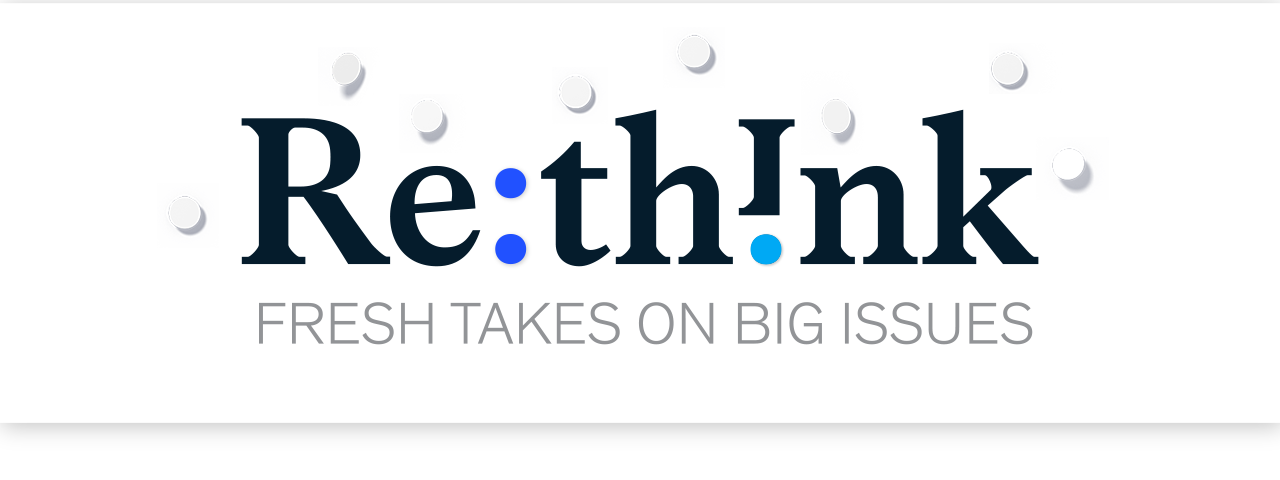 |
| |
|
|
|
NEXT BIG THING?
Signals of the metaverse
|
|
|
|
|
|
|
|
|
|
|
|
Internet searches for the term “metaverse” rose 7,200% in 2021. Those aren’t media mentions. That’s individual curiosity, a clear signal of how much people want to understand the term. The metaverse is a confusing term, because at this point it isn’t just one thing. For now, the metaverse is a combination of elements with the potential to create a vast virtual environment where new kinds of interactions and new kinds of B2C and B2B commerce are possible.
|
|
|
This integrated physical and virtual experience will have three core characteristics: immersive, interactive environments that use technologies such as virtual reality and augmented reality to give a sense of presence and mimic the realism of the real world; a modifiable but persistent state where you can build, create, and interact similar to the way you interact in the physical world; and a digital identity that is as valuable and unique as your physical identity.
|
|
|
People sometimes confuse the metaverse with the technologies that enable it. For instance, the metaverse is not virtual reality. Virtual reality is just a part of the metaverse tech stack, which has a lot of existing technologies and some that are incipient. For instance, 5G is essential for the metaverse. Great connectivity, particularly low latency, is your ticket to board the flight in, as it were. But you also need payments technology, cloud and edge infrastructure, 3-D developer tools, creator tools, security and identity platforms, virtual worlds and content, and even better devices and peripherals.
|
|
|
One big issue is that there’s no portability. What passes for the metaverse today is actually a set of microverses—you can’t move your avatar, social graph, virtual assets, and data seamlessly from, say, Fortnite to Roblox. That’s no good for the over 200 million monthly active users who spend an average of 2.5 hours per day on the services. That will have to change. Those gaming platforms are giving people—especially young people—new expectations for how they can interact online. They assume that they’ll be able to connect, create, and buy and sell in similar worlds. We’ll need a better trust architecture (which may be decentralized and very different from current models) if they’re going to do all that seamlessly across multiple platforms.
|
|
|
For now, I’d say we have just the glimmer of the metaverse. Given that, companies are asking tough questions: Is this all hype and a distraction? Should I pilot an experiment to learn about it? Is this an investable thesis that I should take seriously now? Is it such a serious pivot that I should worry about my core business? And if I can’t answer those questions with confidence, what should I do now?
|
|
|
For almost everyone, learning about the potential of the metaverse is a no-brainer. One great way to do so is to follow venture-capital (VC) funding. For example, Goldman Sachs estimated that there was $10 billion in venture funding for gaming and virtual worlds in 2021, more than twice the previous year. Seeing where the VC money goes can give companies a helpful perspective on what the metaverse might look like as it scales into something bigger.
|
|
| |
|
200 million monthly users spend an average of 2.5 hours a day on Fortnite and Roblox |
| |
|
Experimentation can also be a great way to learn. To date, the experiments we have seen fall into three categories: brand integrations to extend existing experiences such as buying a virtual asset or NFT; ephemeral experiences such as the Gucci Garden; and persistent metaverse experiences such as we see in gaming. In the past few months alone, we have seen brands like Tommy Hilfiger, Forever 21, Ralph Lauren, Nike, NASCAR, and Warner Brothers launch metaverse plays. Experiments can be a way to open the window to the art of the possible—we may not fully know where they lead us, but we’ll certainly learn a lot in the process.
|
|
|
For experiments in the metaverse to work, companies may need to embrace open-ended investments, even small ones. In many cases, the people pushing for metaverse experimentation, who often come out of IT, haven’t tied the effort to a business case. Leaders may have to give them some leeway by expanding their tolerance for small failures. But the experimentation crowd must make more of an effort to think through the potential business value.
|
|
|
In addition, a lot of these technologies require expertise that most companies have in short supply. At this moment of sharp talent shortages, companies may not have the mix of engineering, software, analytics, and IT talent required to execute some of these ideas. Partnering with platform providers like Roblox or Decentraland can alleviate some, but not all, of this problem.
|
|
|
There are many obstacles and much uncertainty. It may well take a decade or more to fully build out the potential of the metaverse. There’s no hard-coded road map. For example, while today’s hype is about consumer use cases, enterprise or B2B cases may be the ones to scale first. Just like in the early days of the internet, it was not clear where it would go and how long it would take to develop, but we knew it was an exciting direction of innovation.
|
|
|
This feels like that kind of moment. Once again, technology is driving innovation into something that’s just around the corner, that could transform our experience in some unforeseen way. It reminds me that the potential of technology is infinite. That’s so humbling, and so inspiring.
|
|
| |
| |
| |
| |
| |
| |
|
|
|
|
|
|
To achieve workforce parity, businesses should apply the same practices they are using against the glass ceiling.
|
|
|
|
|
 |
|
|
|
|
|
Since 2015, progress has been marginal, and now COVID-19 has hit women hard. We offer ten facts about gender equality that everyone should know.
|
|
|
|
|
|
| |
|
Shelley Stewart on diversity commitments
|
|
In the aftermath of George Floyd, companies made enormous efforts to diversity. Here’s how they can deepen those commitments.
|
|
| |
| |
|
This email contains information about McKinsey’s research, insights, services, or events. By opening our emails or clicking on links, you agree to our use of cookies and web tracking technology. For more information on how we use and protect your information, please review our privacy policy. |
|
You received this email because you subscribed to our McKinsey Quarterly alert list. |
|
|
Copyright © 2022 | McKinsey & Company, 3 World Trade Center, 175 Greenwich Street, New York, NY 10007 |
|
|
|
|





